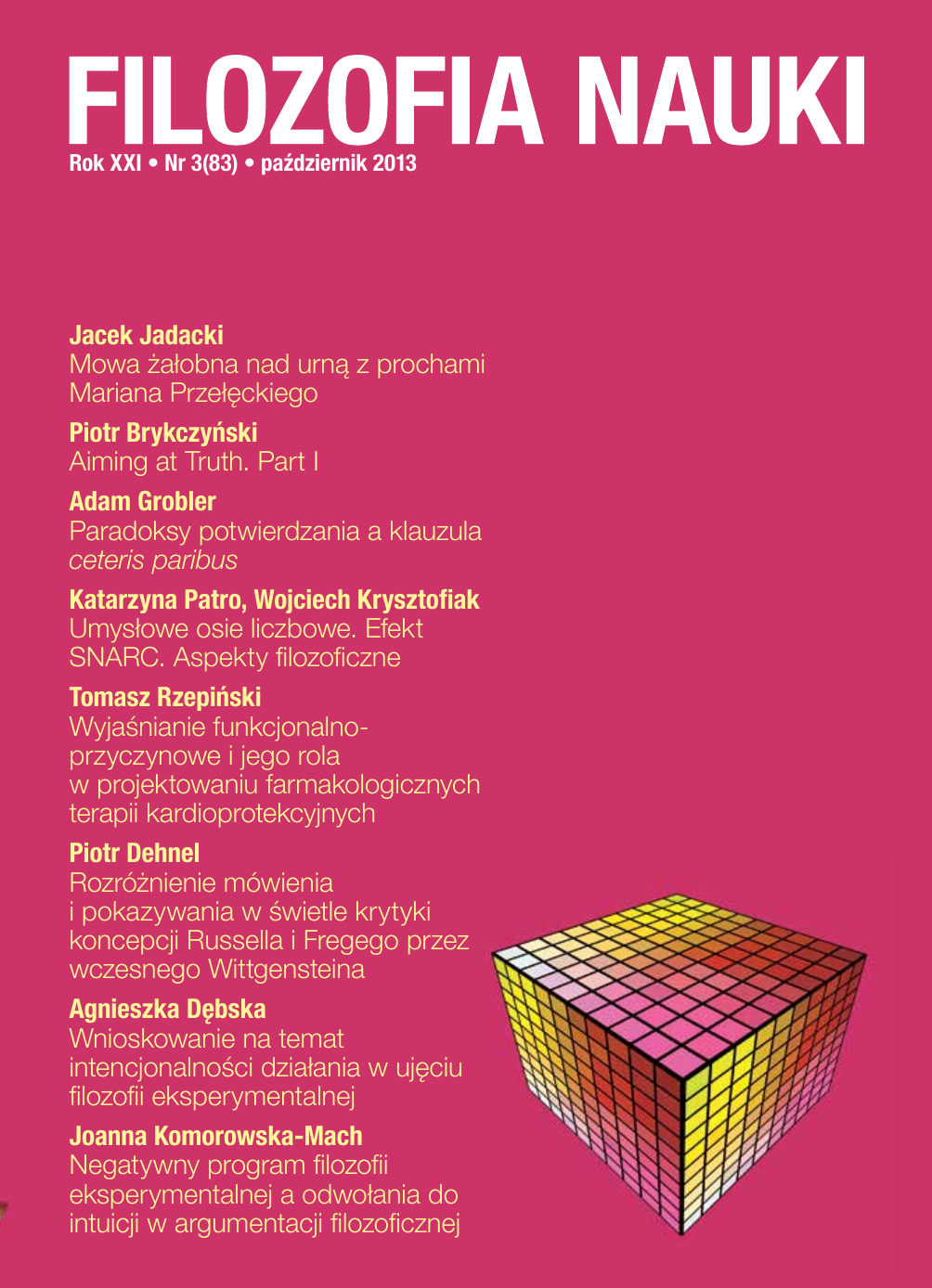Umysłowe osie liczbowe. Efekt SNARC. Aspekty filozoficzne
Słowa kluczowe:
number line, number representation, SNARC, cognitive arithmetic, accumulator mental number line, point-place number lineAbstrakt
The aim of the article is to propose a formal model of a representational system underlying the core numerical knowledge which is usually manifested in psychological experiments as the SNARC effect, size and distance effects, and the effect of numerical scale. Starting with the assumption that all the effects can be explained by a metaphor of a mental number line, we based our model on a hierarchical structure composed of three numerical axes characterized by different levels of representational efficiency: (i) a summation-accumulator axis, (ii) a point-place axis, and (iii) an exact point-based axis. The model predicts that a mature exact number line, in a form as it is observed in most of experiments with adults, arises as an effect of certain transformation processes occurring within first two primary, pre-existing axes. The paradigm underlying the theoretic construction may be interpreted philosophically as a neo-Kantian approach to modelling mind's representational structures.Pobrania
Opublikowane
2013-09-01
Jak cytować
Patro, K., & Krysztofiak, . W. (2013). Umysłowe osie liczbowe. Efekt SNARC. Aspekty filozoficzne. Filozofia Nauki, 21(3), 45–98. Pobrano z https://www.fn.uw.edu.pl/index.php/fn/article/view/730
Numer
Dział
Artykuły















 Filozofia Nauki | ISSN 1230-6894 | e-ISSN 2657-5868
Filozofia Nauki | ISSN 1230-6894 | e-ISSN 2657-5868